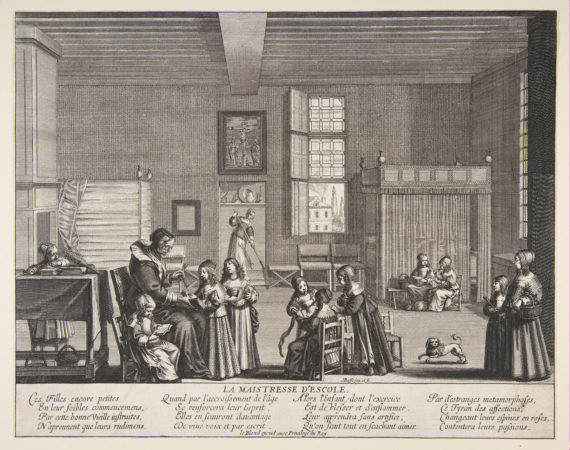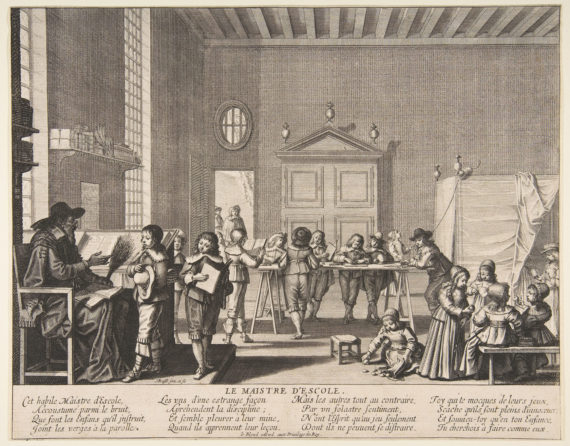Children (both boys and girls) of wealthy or noble households could receive some or all of their education at home, with specially-hired masters. Children from a number of households might gather to be taught together in this way. After a certain age, girls and boys were usually separated for educational purposes. Though boys were often educated to a higher level than girls, this was not always the case. The sixteenth century produced a number of highly educated women from elite families who were celebrated for their talents, including Margaret Roper, Lady Jane Lumley, Lady Jane Grey, and the Cooke sisters. All of these women were able to read Greek as well as Latin, a high level of educational achievement by any standards.
Abraham Bosse’s French engravings depict relatively elite schoolroom settings, in the interiors of wealthy residences. What differences can you see between the two scenes?












